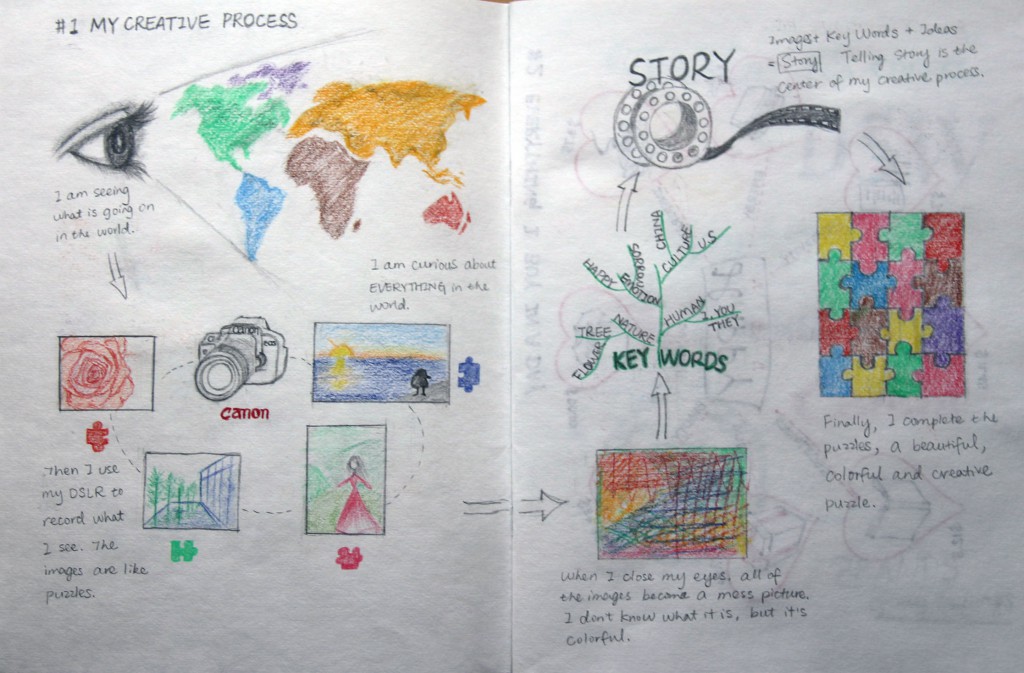In the article “Deeply Seeing”, the author talks about the importance of seeing. When we see the subject, the meaning is coming up in our mind at the same time. He says, “Seeing determines every aesthetic decision” (72). First, artists see the subject that inspires them to create new things. Second, they scan the subject, then “dissecting the relationships of part to part balanced within the forms, appreciating the rhythm of its structure”. Furthermore, the author talks about his adaptation of the scientists finding of creative process. The creative process includes formulation, saturation, incubation, inspiration, translation and integration. In my opinion, I don’t think seeing determines every aesthetic decision. Artists can get inspiration beyond seeing. They can hear, touch and taste. Many ways would inspire people to create such as sound, music and smell. For the creative process that the author introduces in the article, I agree with him, but it is also a little complicated for me. This kind of creative process is very logic and strict. Also, the author says, “Not all artists will recognize each phase in their work, and each phase takes its own time, widely varying from work to work” (76). Everyone has his or her own way to create things. I think some artists might just have two or three stages of the creative process that is mentioned in the article. When I took my creative strategist class, I drew a map of my creative process. My creative process only has four stages. I wote, “I am seeing what is going on in the world” – “Then I use my DSLR to record what I am seeing. The images are like puzzles” – “When I close my eyes, all of the images become a mess picture. I don’t know what it is, but it’s colorful” – “Images + Key words + Ideas = Story. Telling is the center of my creative process”. Finally, I complete the puzzles, a beautiful and colorful puzzle.
